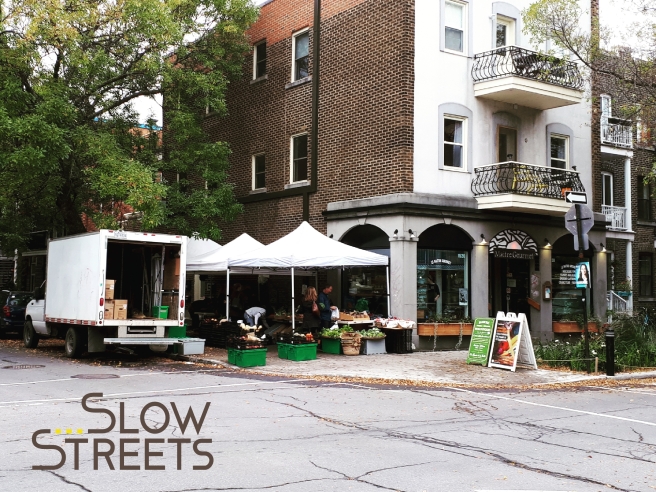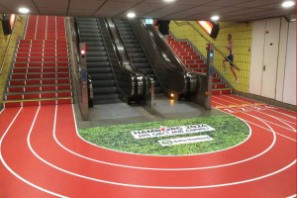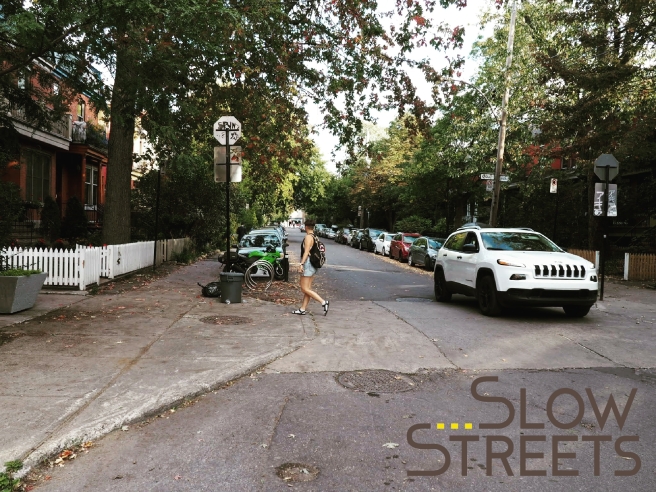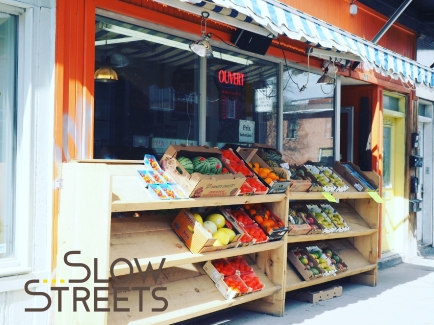The minute we walk out our front door we are influenced by a world that is too complex for our brains to handle. According to Daniel Kahneman in Thinking, Fast and Slow, in order for our brains to simplify and transform this overly complex world into something more manageable, our brains simplifies what we experience with intuitive heuristics. Our brains have two parts, the first is intuitive and automatic, the second is more deliberate and requires focused attention. Most of the time we operate on the intuitive and automatic part of our brain in this complex world of senses. Our brains weed out what it deems as unimportant information, however this simplification comes at cost. In an attempt to simplify our world, our brains have stream-lined our experiences in such a way that our external environments affects our first, automatic and intuitive part of our brain.
According to Kahneman and the studies he has conducted something as simple as showing people images that are suggestive of older age causes people to walk slower. When people are ordering food at a menu, you always want to be the first to order as for most people following the first order will change our order to something we might not necessarily want just to make sure we are not seen to be copying someone else’s order. What all of this is trying to say is our behaviour is heavily influenced by our external environment whether we know it or not (most likely we don’t know it). We are prompted by things we see, feel, hear and touch in our environment.
This brings me to the question about urban design and how we can use this knowledge. Cities are full of aspirations to enact changes in transportation modal shares, access to park and green spaces and encourage people to uptake healthier and greener behaviours. To achieve these goals we need to prompt your city. The positive impacts from this include encouraging people to act towards being healthier psychologically and physically, we can encourage people to be happier, form more social connections, as well enable us to reduce crime and harassment.
According to Doug McKenzie-Mohr the best way to encourage behaviour changes are prompts. Often we are so caught up in our daily lives and the complex maze of bills, doctors appointments, friends and children recitals that we need a reminder to take a second each day for the activities that develop our psychological well being. Prompts can break our train of thought and nudge us to a different habitual behaviour. According to Doug McKenzie-Mohr prompts are the most effective at the location where you want to see the behaviour change. Prompts are also most effective when they are simple, direct and tell people what to do rather than explain why people should do it. It is also important to prompt for the behaviour that you want, not the behaviour that you don’t want. For example putting up a sign that says don’t feed the ducks will actually more likely prompt people to feed them.
Tactical urbanism

At Slow Streets it’s no secret we are a fan of the quicker, lighter and cost effective solutions, solutions that can be implemented quickly to garner immediate results today and formalized later when the effectiveness is gauged and additional funding is made available. We are fortunate that we have a low cost and quick way to trial changes to test and evaluate these prompts and maximize their positive benefits. Tactical urbanism is a new method that Mike Lydon has been cataloging for years. The idea is simple, take the concept you want to develop and design it using the most lightest and cost effective materials using the quickest construction methods. It is amazing what you can build and the results you can generate using tactical urbanism.

Cars spend 95% of their time parked. Parklets can transform a space for parking a car into a place for people. The great thing about Parklets is their small size which allows you to bring great public spaces closer to where people want to be, on our fine grain retail streets next to all of the interesting shops and restaurants. This again can prompt people to take a few minutes out of their day to stay in the place making it more inviting prompting even more people to fill the streets in a virtuous cycle.
Urban Design
To prompt people to reduce their carbon footprint, get more exercise and form better relationships with their neighbourhood and the people in them. We must bring grocery stores, hardware stores and other daily services and amenities closer to where people live so they don’t have to drive and can walk or bike. This means ending land use segregation and introducing mixed land uses, therefore the distance between home and the services is eliminated. This creates an environment based around convenience.

Groceries can also be brought closer to where people live to prompt healthier eating and eliminate food deserts with smaller temporary sidewalk farmers markets right in the neighbourhoods. Temporary buildings can also be built to house grocery stores as shown from the photo in the tactical urbanism section.
We can introduce community gardens, mini libraries and give people opportunity to connect with their neighbourhood on a different level while also learning and improving their mental health. The presence of people out in the public also prompts people to feel safer as their are “eyes on the street.”

We can prompt improved satisfaction with neighbourhoods and improved mental health by introducing more accessible and high quality greenspace.



It can also be as simple as positioning visible, attractive stairs in front of the elevator to encourage more people to take the stairs. Simply having a sign that prompts people to take the stairs is also effective. Other cities have been experimenting with fun and creative visual designs such as piano key steps and race tracks to encourage people to take the stairs instead of the escalators. Another city incorporated a slide into the entrance of a train station.
Transport
If we move in a way that makes us feel strong and confident we can dramatically change our psychology. There are 43 muscles in our face, simply smiling and laughing can change our mood instantaneously. Better psychology has a direct link with better physiology. Sitting is the new smoking of our times, and it just takes 2 minutes of walking per hour to over come the harmful effects of sitting. Walking is shown to dramatically improve the performance of our brains, we can think more clearly and are more creative and happy when we are walking. According to Jan Gehl, humans have evolved for walking. We have a depth of vision and periphery that is best for appreciating the details of our environment at a walking speed. So we know that exercise can dramatically change our mental health. How can we encourage people to get more exercise?
We can prompt people to take other ways of travelling by making other modes easier and more readily available. This includes adding bike parking on the street. Bikeshares are another low commitment way to prompt people that don’t own a bike or don’t have the space to store a bike into trying cycling. We can introduce bikeshare stations and provide thousands of bikes across the city for a minimal fee. The bikes themselves can serve as prompts getting the best of people’s curiosity.
According to Till Roenneberg in his book Internal Time, our modern life in cities with increased time spent indoors and less time spent to the light outdoors has substantial consequences for the internal clock timing of our physiology. “If we were to cycle to work and back instead of taking the subway, we might become one hour less sleep-deprived every night during the workweek and would therefore have less sleep loss to compensate for on our free days. And we would also boost our learning capacity, our immune system, our mood, and our social skills.”
The biggest barrier to cycling is the worry of mixing with fast moving traffic. Using a combination of protected cycling infrastructure & traffic calming to reduce the volume and speeds of vehicles can invite people to cycle. Cycling also benefits from safety in numbers, where the more people that are cycling the safer it becomes because drivers become used to interacting with them so they adjust their behaviour. I would argue that the sight of large volumes of people cycling has a secondary effect of attracting other people to try cycling. If you can’t fight them, join them right? Calgary is the leading example of building an entire network of safe, comfortable and convenient cycling lanes all at once, and it has had an impact attracting over 1 million trips over one year.

We can also prompt drivers to understand and respect the safety of other ways of travelling. One of the best things we can do is introduce protected cycling lanes. However most collisions happen at the intersection, therefore by reducing the size of intersections and introducing protected intersection designs would prompt people to respect the safety of people cycling.

Physical designs that consistently generate expected driving behaviours are needed. Physical designs include integrating raised intersections/crossings, leading walking intervals and protected cycling infrastructure. However some softer infrastructure can help such as artistic crosswalks.
Public Space

To prompt the benefits that placemaking can bring people such as improved socializing and happiness make the smaller spaces and bring them closer to where people live, work and play. The photos above of a sidewalk corner and a converted street slip lane in Montréal demonstrates how effectively our streets and sidewalks can be transformed to create places for people to stay, despite how infrequently we think something such as a sidewalk as a public space. This includes simple changes such as adding benches to a sidewalk and some murals to blank walls. All we need is some paint, some wood and voila we can transform our spaces.
People attract other people, therefore people are also a prompt. If we design spaces to attract people then it will generate a self-reinforcing cycle that attracts more people to them. Through attracting people public spaces prompt the benefits of increased social interactions and physical interactions.
However it is also important to clear our public spaces of snow in the winter, a time when they are needed the most due to low solar levels. We could even introduce some climate control to public space. These measures would make prompt people to get out of the house in the winter and mingle with other people.











